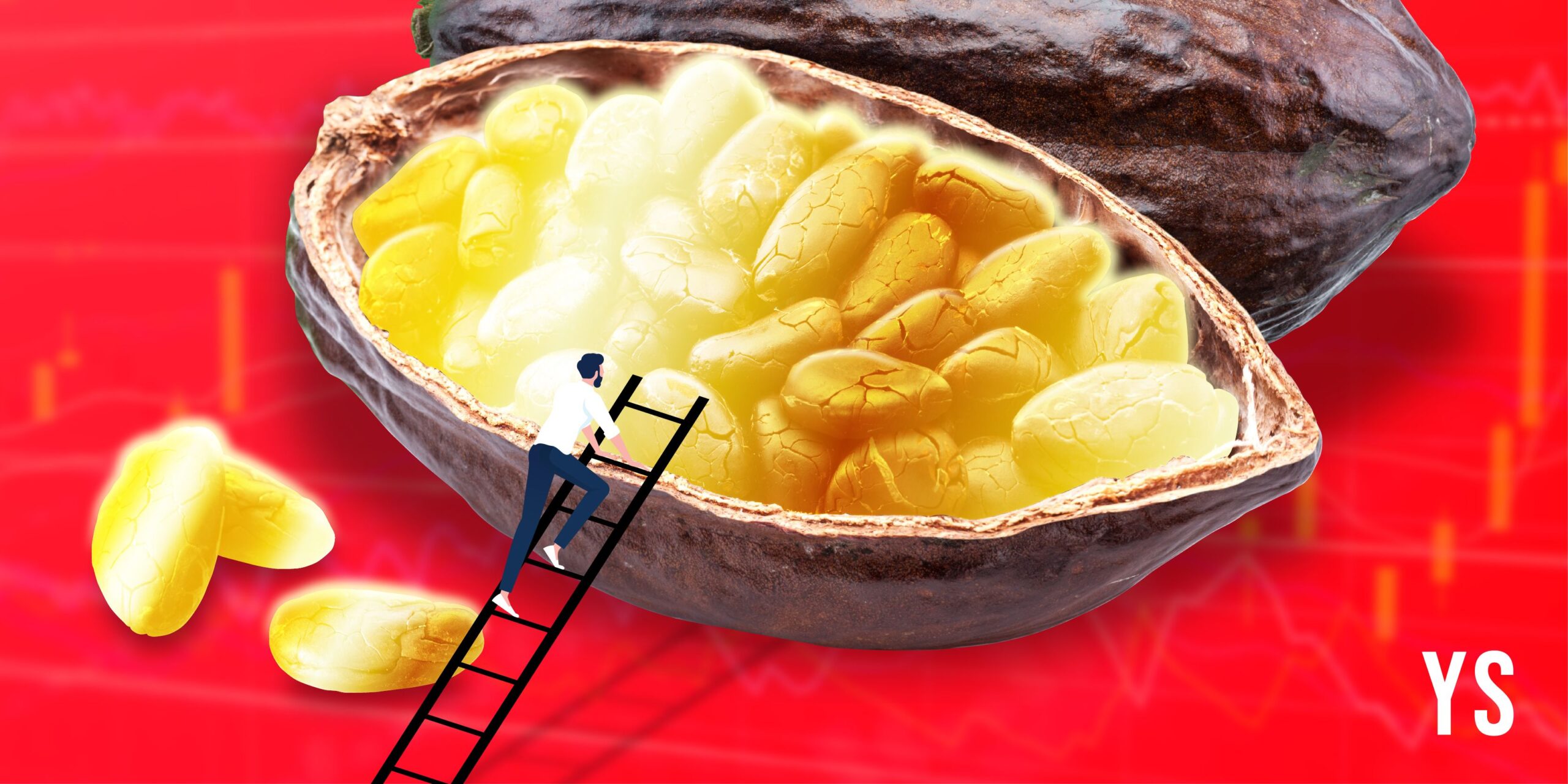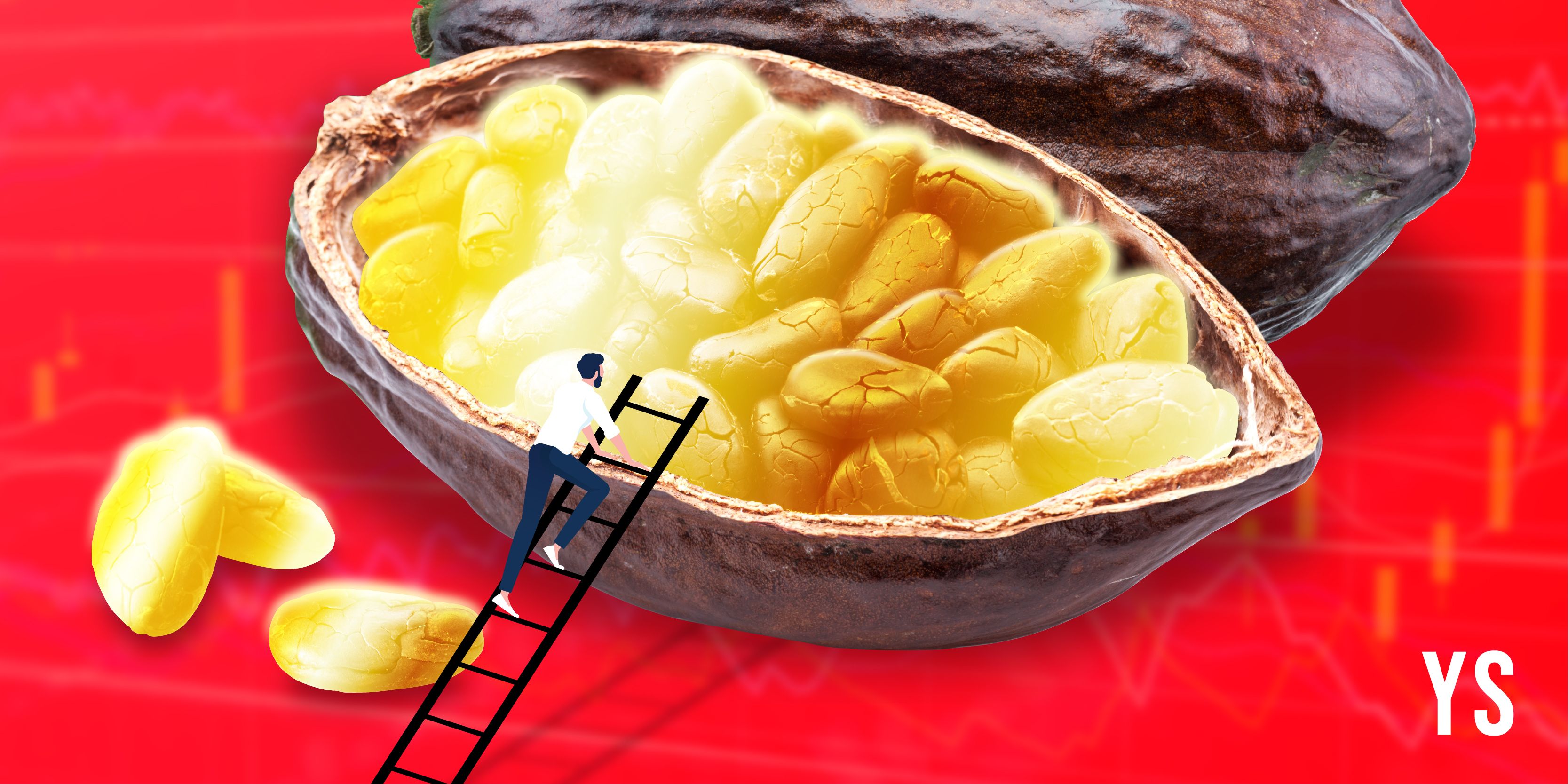
If Roald Dahl were to write his classic today, it probably would be titled “Charlie and the Super Expensive Chocolate Factory”.
This is because a combination of factors has pushed the price of cacao beans—the raw material used to make various chocolate—to stratospheric levels, leaving chocolatiers like Bengaluru-based Nivedita Prasad bracing themselves for the worst.
Trained at the prestigious Callebaut Chocolate Academy in Belgium, the chocolatier manages Chocolate Philosophy, an 18-year-old craft chocolate brand. She and her business are getting ready for the spike in global chocolate prices to ripple its way home.
“We might not have to increase our prices immediately as we have some stock with us now. But by the next financial year, the prices will definitely start pinching our margins,” the co-founder tells YourStory.
<figure class="image embed" contenteditable="false" data-id="542754" data-url="https://images.yourstory.com/cs/2/ebefb4a0b2a011edb86579ca40e04503/Untitleddesign11800x1800-1713360506931.jpg" data-alt="Chocolate Philosophy" data-caption="
Indian-made craft chocolate bars offer a much higher percentage of cocoa
” style=”float: left; margin-right: 20px; width:50%; height:auto” align=”center”> Indian-made craft chocolate bars offer a much higher percentage of cocoa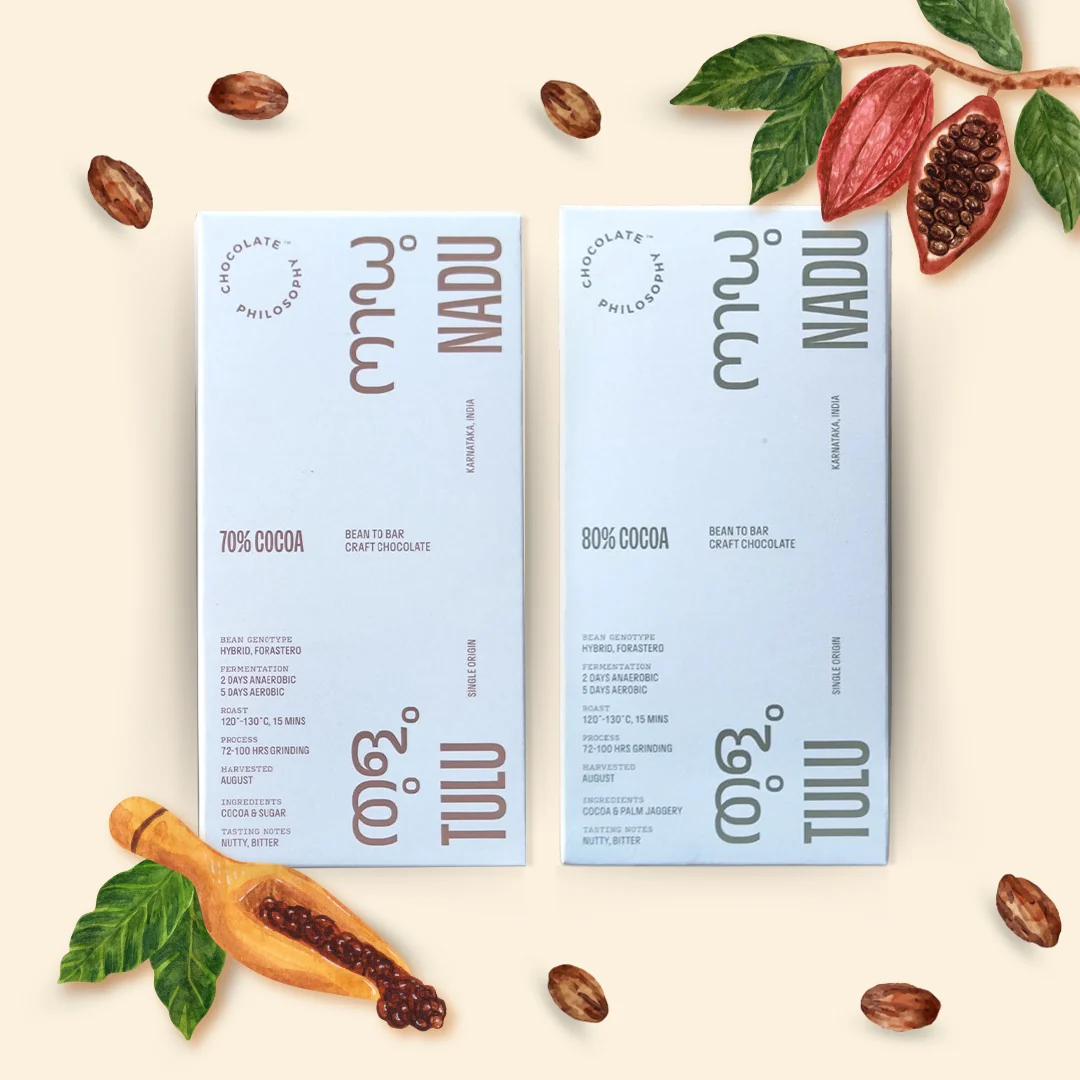
However, many brands across the globe and in India are not so lucky. Some manufacturers like Mars have either resorted to reducing the size of their chocolate bars or—like Amul—considering increasing the price of their dark chocolates. Others, according to a report by JP Morgan, may substitute cocoa butter with milk solids or dry fruits.
Since October last year, the price of cacao beans has skyrocketed. For the first time, cocoa (roasted cacao beans) now costs more than $10,000 per metric tonne—a 3X rise in just six months. This surge is attributed to bad harvests in Ivory Coast and Ghana, the world’s largest cocoa producers. A combination of factors including climate change-induced drought, abnormal weather patterns caused by El Nino, fungal black pod disease, and age of the trees has led to lower yield and, thus, higher prices.
In fact, Ivory Coast’s cocoa regulator, Le Conseil Cafe-Cacao, has halted future cocoa sales for the 2024/25 season until it gets a clear picture of expected cocoa production. This has further affected supplies.
The steep price of the raw ingredients has spooked the budding craft chocolate industry in India, leaving many chocolatiers with no option but to pass on the cost to consumers.
Sweet nothings
Distinct Origins, one of Asia’s largest fine-flavour cocoa processing plants, is bearing the brunt of the price hike. It procured the raw beans from farms near the river Godavari in Telangana at Rs 820 per kg on April 3 compared with Rs 250 through most of December.
Investor speculation is also driving prices up. The JP Morgan report reveals that non-commercial investors now hold over 60% of total open interest across cocoa futures and options in the New York market, a historical high.
“People who have nothing to do with chocolate are now trading the commodity,” comments Distinct Origins chief Chaitanya Muppala, who is also Founder and CEO of chocolate brand Manam Chocolate.
The market frenzy has forced some companies to make difficult decisions. The Whole Truth, a Mumbai-based clean label direct-to-consumer (D2C) food brand, has halted the production of its milk chocolates and significantly increased the prices of its dark chocolates from Rs 200-299 to Rs 299-375, according to a report in The Financial Express.
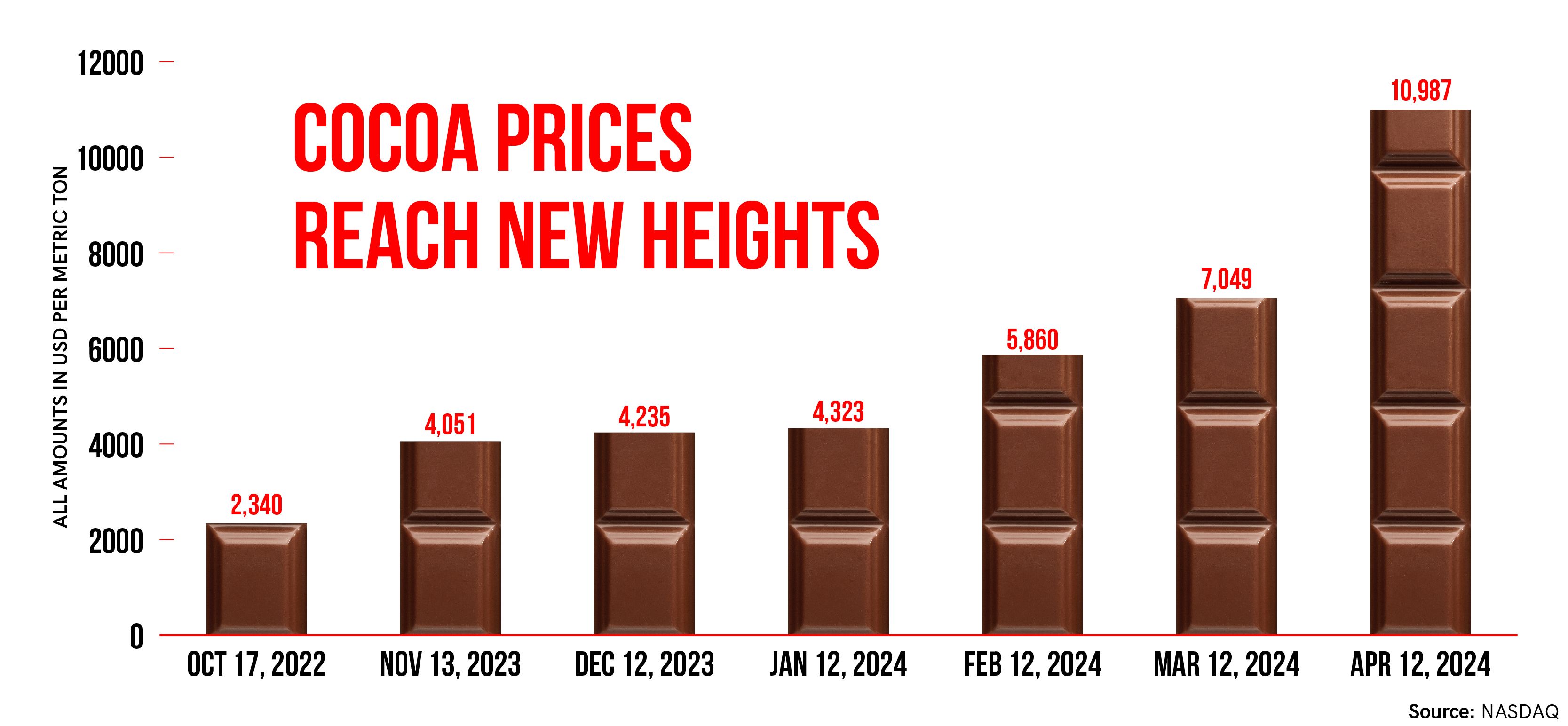
.thumbnailWrapper{
width:6.62rem !important;
}
.alsoReadTitleImage{
min-width: 81px !important;
min-height: 81px !important;
}
.alsoReadMainTitleText{
font-size: 14px !important;
line-height: 20px !important;
}
.alsoReadHeadText{
font-size: 24px !important;
line-height: 20px !important;
}
}

Opportunity in adversity
Many chocolatiers, including craft chocolate establishments, are now turning their attention towards domestic growers.
In India, cocoa is cultivated in Kerala, Tamil Nadu, Andhra Pradesh, and Karnataka. The cacao plant was introduced to the country by the British confectionery giant Cadbury in the mid-1960s.
<figure class="image embed" contenteditable="false" data-id="542753" data-url="https://images.yourstory.com/cs/2/ebefb4a0b2a011edb86579ca40e04503/img05-1713359724756.jpg" data-alt="Raw cocoa" data-caption="
Raw cacao beans are fermented, dried, roasted, and then ground into cocoa, which is refined, conched, and tempered to make chocolate.
” style=”float: left; margin-right: 20px; width:50%; height:auto” align=”center”> Raw cacao beans are fermented, dried, roasted, and then ground into cocoa, which is refined, conched, and tempered to make chocolate.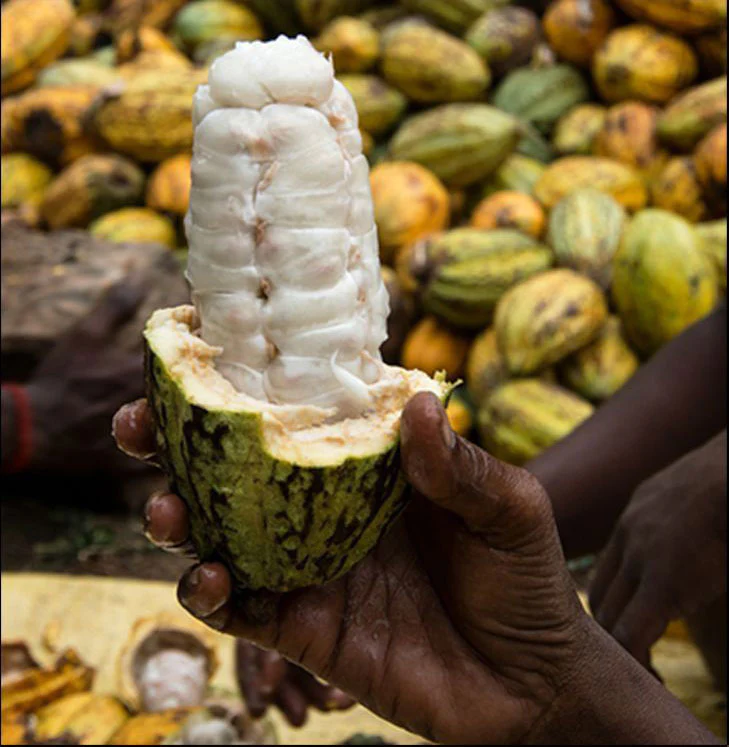
For Regal Plantations Co-founder Karthikeyan Palaniswamy, the price hike came as a missed opportunity as the cocoa plantation, which spans 45 hectares in Tamil Nadu, has already sold most of its produce for this season. However, there are bigger plans for the over three-decade-old brand.
“It is not that big of a blow for us because of the quality of our produce, we already sell at a 10% premium to market rates,” Palaniswamy says.
He has identified a larger opportunity in exporting these beans to a more mature market. After being recognised at international fairs and conventions for the bean’s flavours and aroma, Regal Plantations today sells its produce to Michelin-starred restaurants in Europe, exporting 35 tonnes—a quarter of its yield—every year.
Distinct Origins’ Muppala notes that most Indian farmers grow produce for large multinationals like Mondelez and smaller marketing cooperatives like Campco.
“Our aim from the get-go has been to improve the reputation and create demand for Indian-grown cacao beans at the international level so that farmers make the most out of their produce,” he adds.
Spotlight on craft chocolates
Muppala expects confectionary giants to alter the cocoa content in their chocolates to cushion the effects of the price rise, which presents an opportunity for craft chocolate brands.
“People now are willing to pay a premium for good quality, premium chocolate. This also allows Indian farmers, who have remained underpaid, to demand a rightful price. Indian cacao is unique; it is deforestation-free and child-labour-free,” he adds.
In 2013, companies like Soklet (craft chocolate brand under Regal Plantations) from Tamil Nadu, Naviluna from Karnataka, and Mason and Co from Puducherry decided to capitalise on finer quality produce and make craft chocolate confectionery using this Indian-grown cocoa.
This sparked the “bean-to-bar” movement in India, wherein chocolate makers like Manam started getting involved in all stages of chocolate production, from cultivation, experimenting with fermentation, drying, to marketing the finished product.
<figure class="image embed" contenteditable="false" data-id="542747" data-url="https://images.yourstory.com/cs/2/ebefb4a0b2a011edb86579ca40e04503/DISTINCTORIGINSCacaoFermenteryWestGodavariDistrictAPphotoHashimBadaniDSC4619ecopy-1713358269632.jpg" data-alt="Manam fermentation plant" data-caption="
Over the years, Manam Chocolate has experimented with the fermenting process to enhance the distinct flavours of Indian cocoa beans.
” align=”center”> Over the years, Manam Chocolate has experimented with the fermenting process to enhance the distinct flavours of Indian cocoa beans.
While many founders believe that cocoa prices will see some correction, they may not go down to the pre-December levels. Regal Plantations will now look to divert an increased share of their cocoa beans towards exports while increasing the prices of the craft chocolate confectioneries at Soklet.
Muppala hopes that people are going to be much more conscious about the chocolate they’re consuming if the prices of mass-produced chocolate products rise, giving more leeway to craft chocolates. He is not yet planning to hike the prices of his products and is waiting to see how the prices will fluctuate over the next couple of months.
“We’re hoping that more and more people will be flocking towards speciality, craft chocolates if the prices are high,” he adds.
Last season was the second full harvest for Manam and Distinct Origins. While Muppala has plans to start exporting fermented and dried cacao beans to artisans overseas, he is not entirely sure how it is going to play out yet in terms of margins.
“But we have established demand for our products, that’s for sure,” Muppala asserts.
(Feature image and infographic by Nihar Apte.)
Edited by Kanishk Singh

